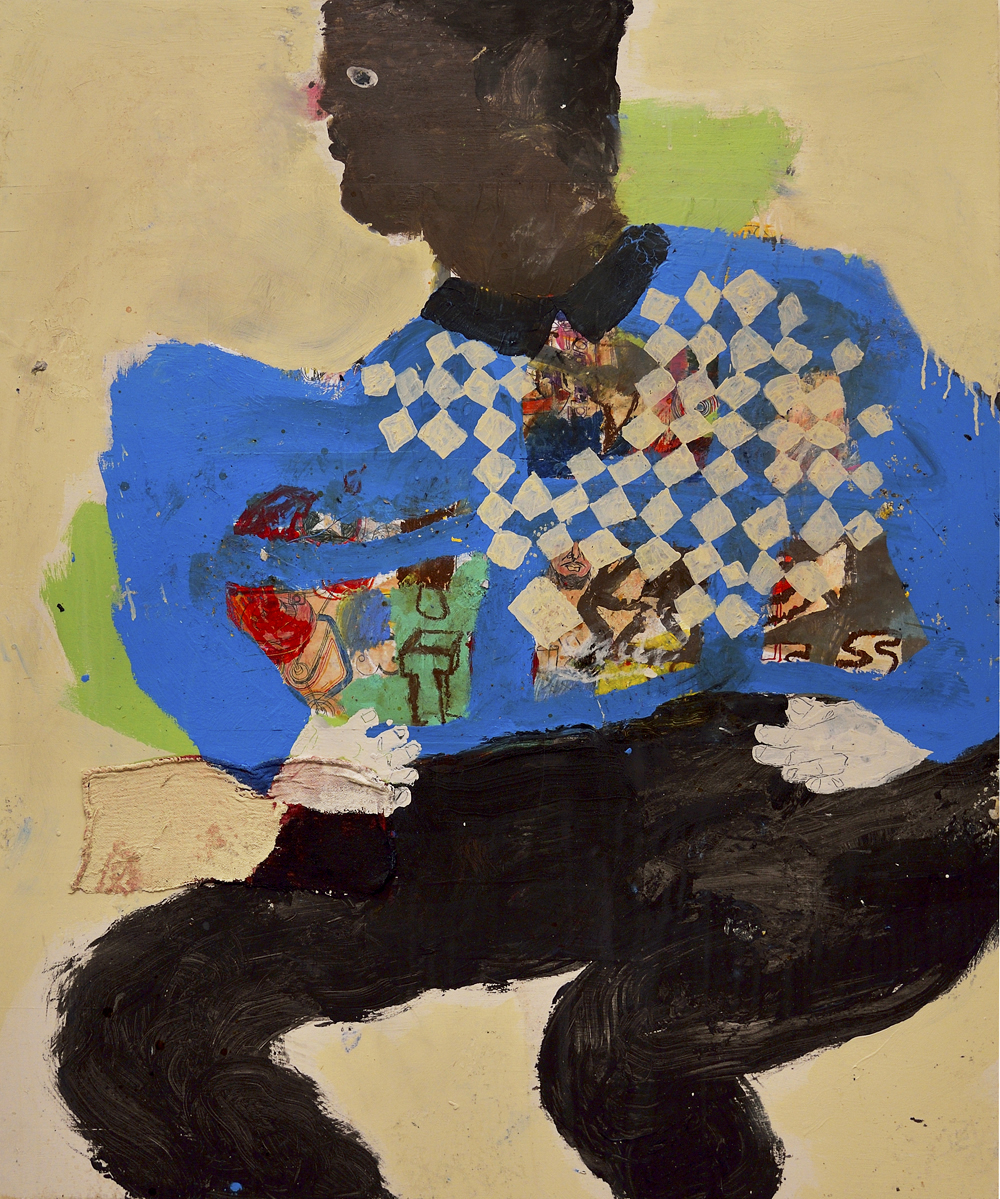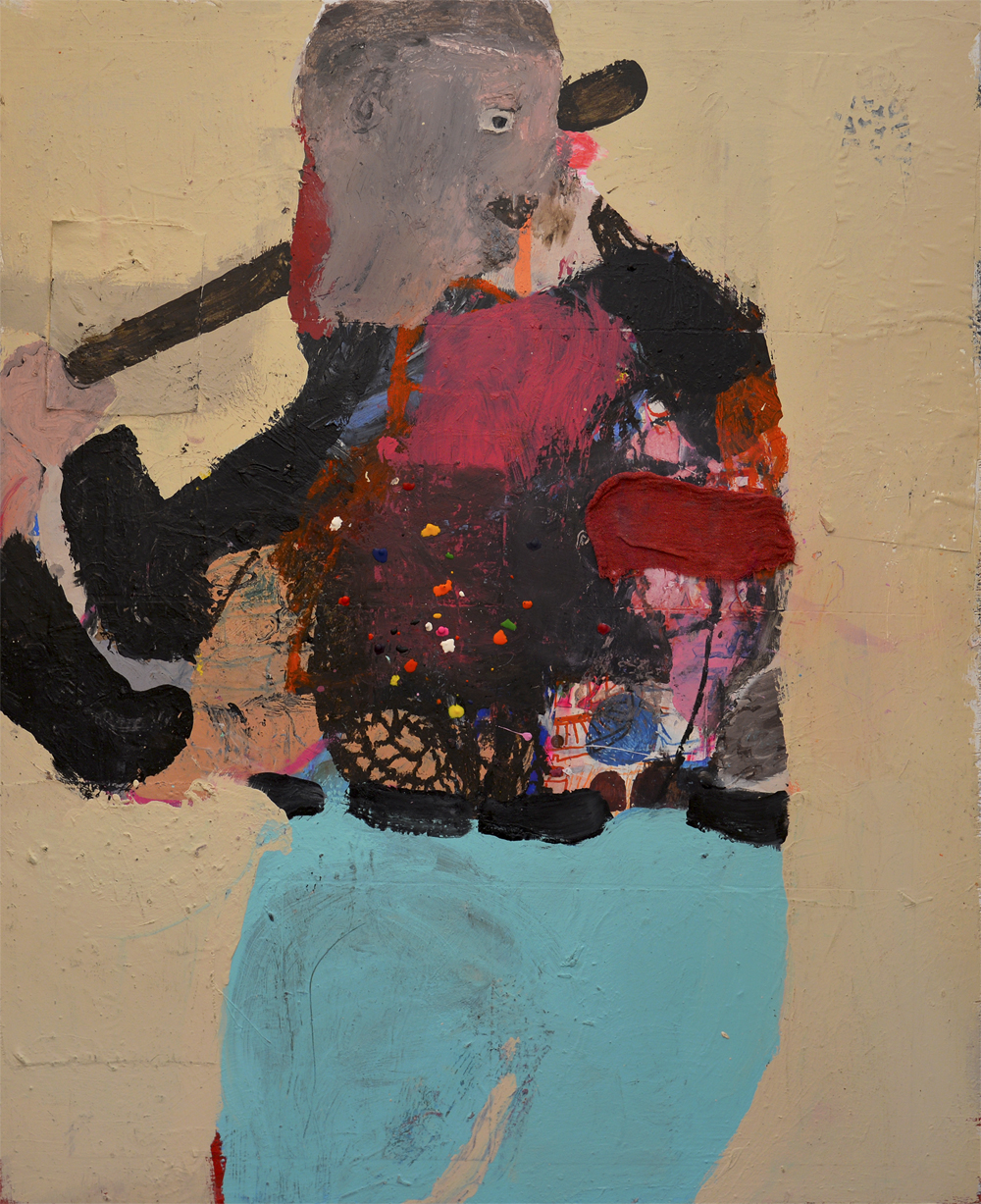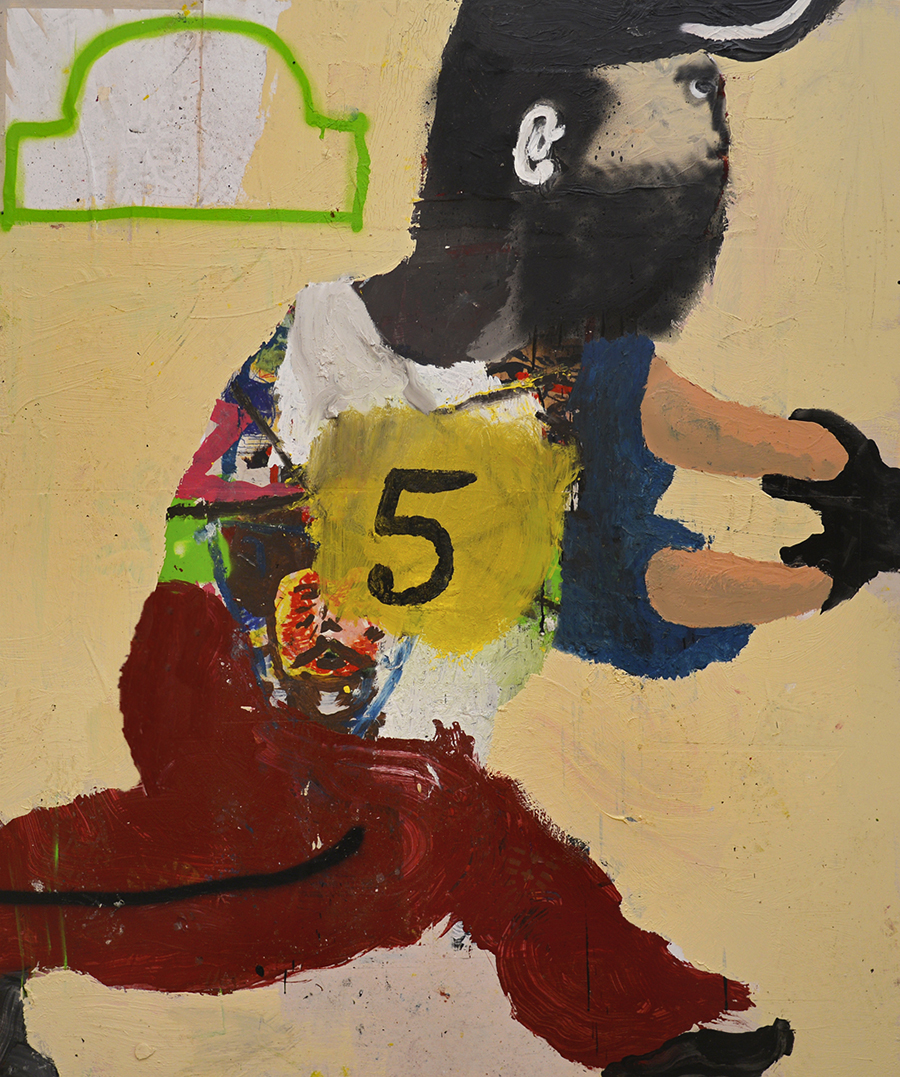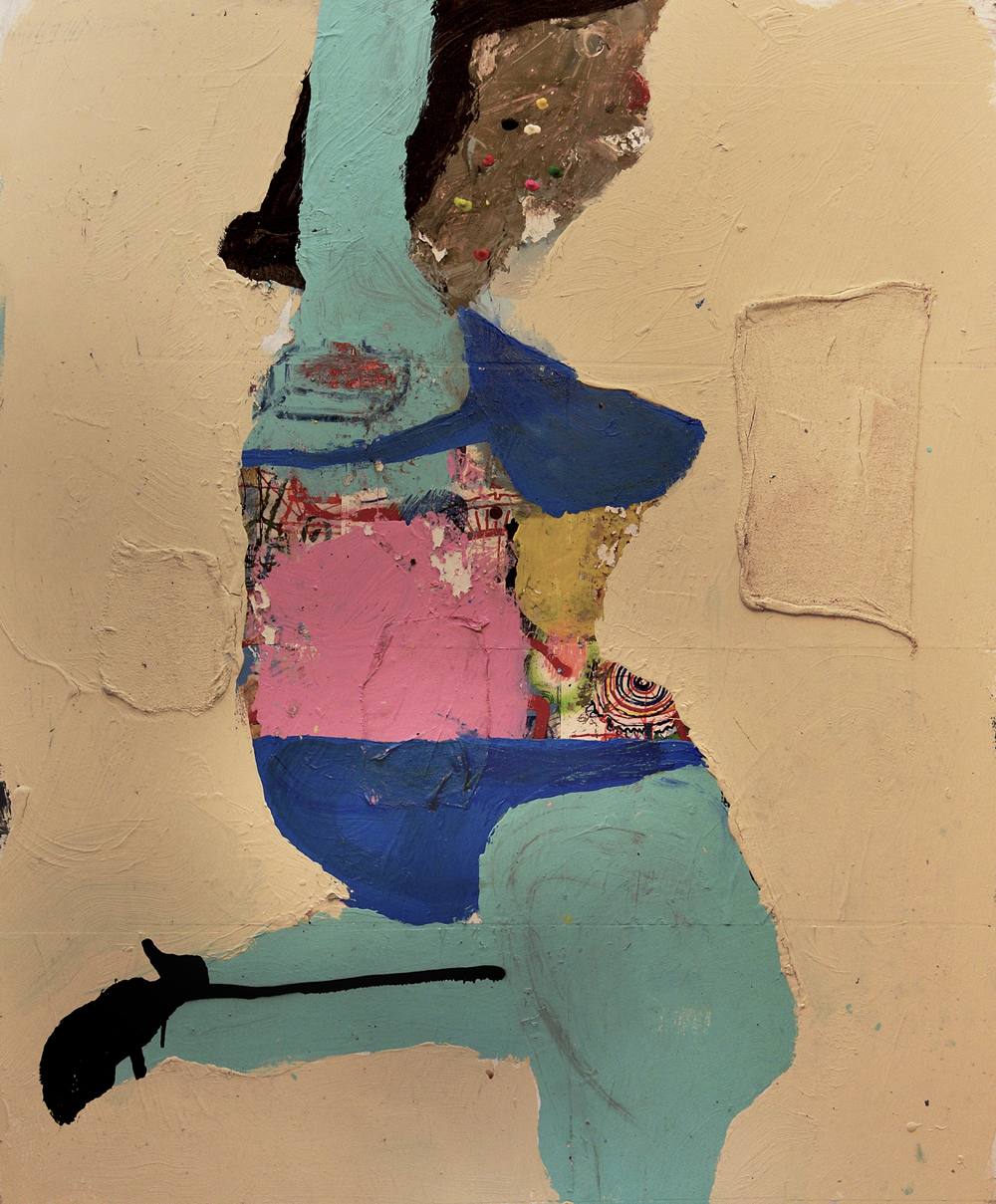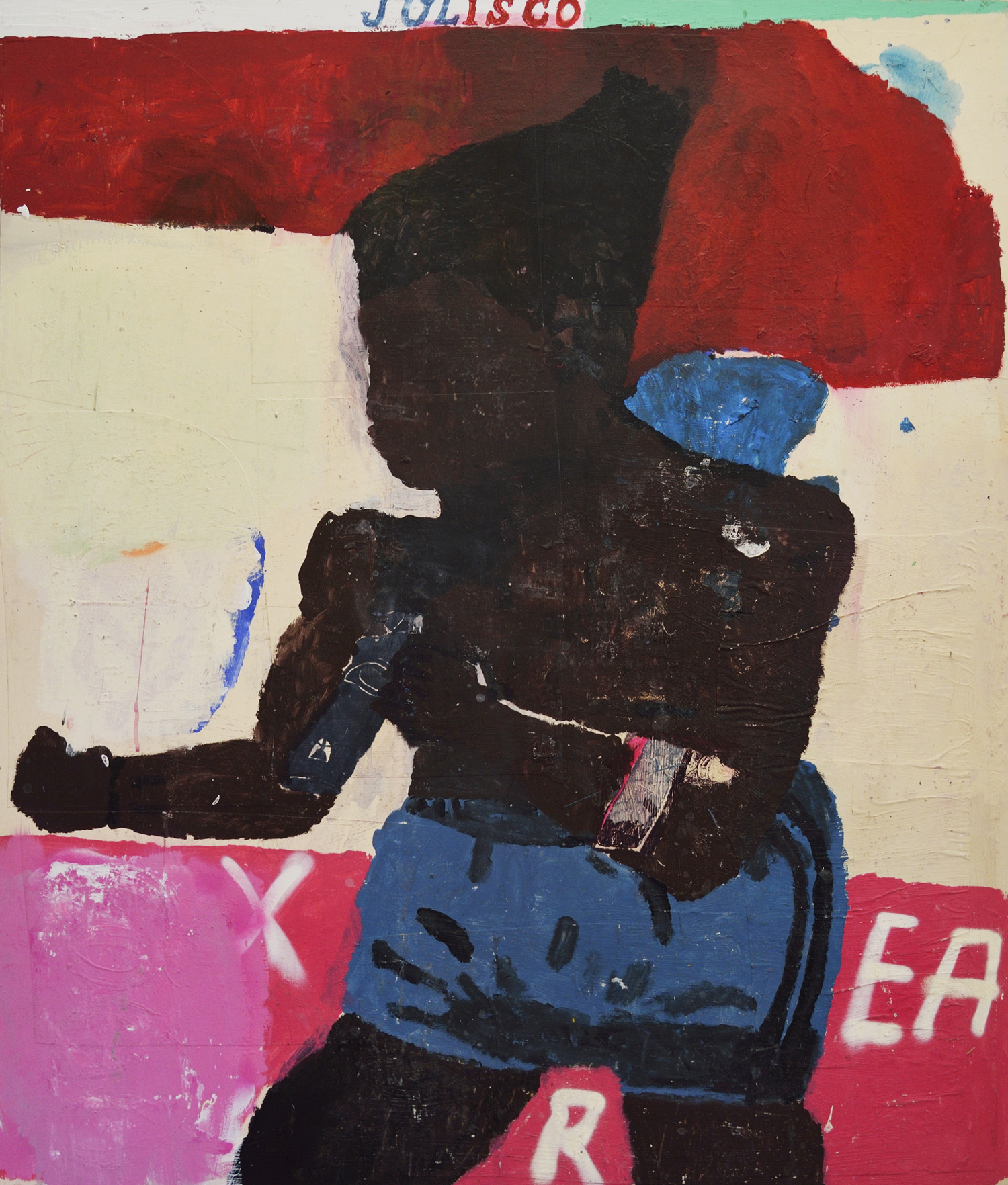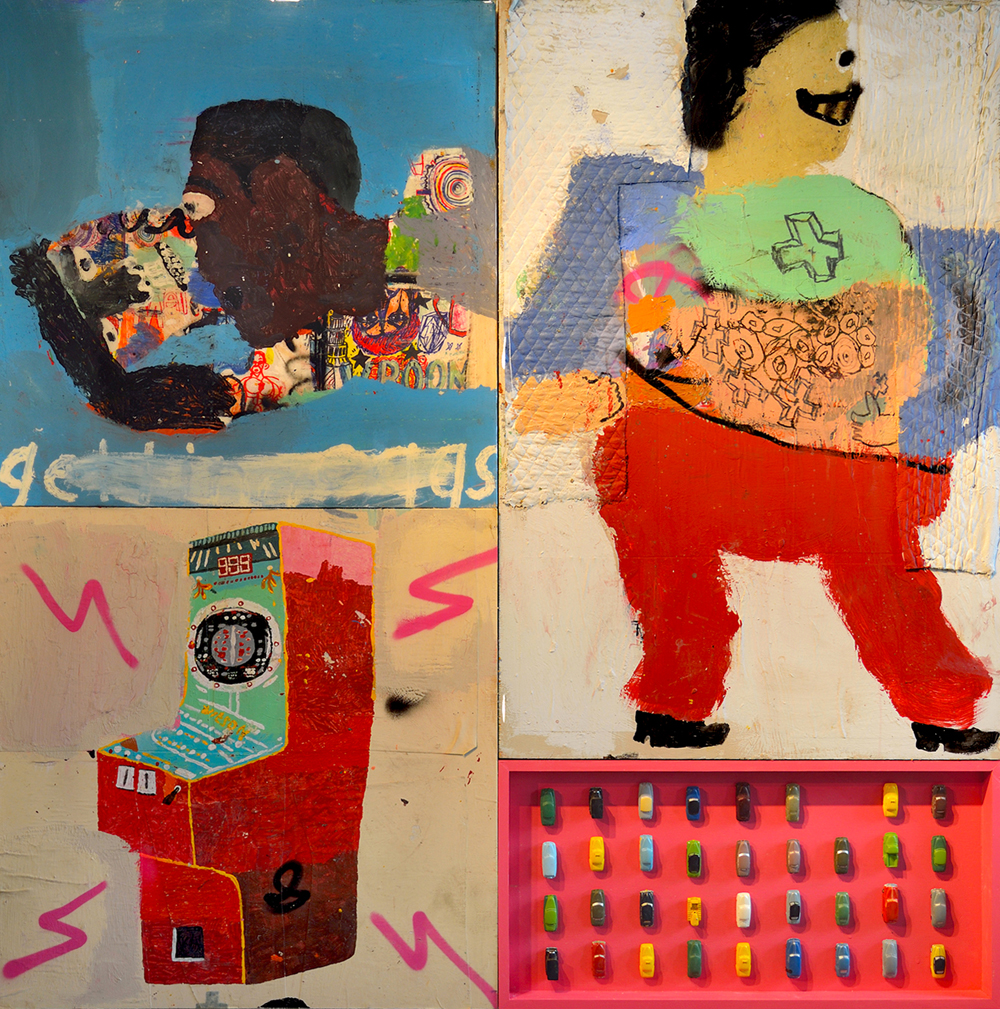Romancing Banality
Lyle Carbajal is a multimedia artist focusing on the social commentary of cultural and economic perception and their implications in contemporary art; he refers to his particular style of painting as “existing somewhere between the vernacular and the contemporary avant-garde.” His work is bold, colorful and child-like, with a sophisticated approach to composition and mixed medium application. There is something refreshing about the manner in which Carbajal references race and color by it’s many shades of browns and black. Romancing Banality is his current traveling installation exploring these ideas, in which viewers are fully immersed into the environment of his subjects for a truly distinctive, engaging, multi-sensory experience that challenges perspective and social beliefs.
“It’s a city’s Zeitgeist that interests me,” says Carbajal. “The sights, the sounds, the way its people either cherish or disregard artistic forms, the city’s visual connection to the past and whether or not it recognizes its indigenous culture.”
HAF: How long has “Romancing Banality” been a working installation project?
LC: The project kicked off in Seattle Dec. of 2013, before moving to New Orleans at the end of 2014 and finally opening in Nashville in June of 2015. At present, Romancing Banality is slated for a Houston exhibit in two distinct locations–one late in 2016 and another early 2017.
HAF: What is your objective of Romancing Banality?
LC: I’m constantly striving to make the work more and more relevant, immediate and authentic. Most everything in Romancing Banality has a history or biography attached to it. One such thing for instance, is the authentic Mexican boxing bags largely donated to the project by the actual boxers themselves. Also much like the bags and carritos, the film that accompanied the Nashville installation and coupled with the carniceria, was entirely shot and edited in Juarez, Mexico as I felt the film needed to be entirely created in its appropriate location to remain true and thus powerful to the project. I’m always thinking about this level of appropriation and how a signifier naturally follows through its course. For the latest project, which will be in Houston in 2017, I will be working with a music producer to bring local hip-hop and rap into the project. It’s a large undertaking for sure, but with the six months buildup-up time I usually allot myself—certainly attainable.
HAF: when I first saw the diamond pattern use in several of your works, I thought it was steel grate, very heavy. What material is it?
LC: It’s actually a quilted fabric although you are correct–it can be very heavy depending on the painting’s final application.
HAF: I notice you repeat the cross structure as frame for several of your work? what is the significance of the cross?
LC: “To convey emotion and profundity by what only seems a minute amount of effort = brilliance.”
I employ simple iconography like the cross or a silhouette not only for its simplicity but also for the power and hidden meaning they convey. This then ties into the bigger themes in my work and the installation like worship, heroism, culture, class, race and socio-economics.
HAF: How do you feel your work is connected in the Art Brut tradition?
LC: I believe a good part of these “connections” have been made for me. I’m not trying to back into a tradition… at least not anymore. With that said, I do believe that my work does exist somewhere between the vernacular and the contemporary avant garde, although I wouldn’t label myself an outsider.



